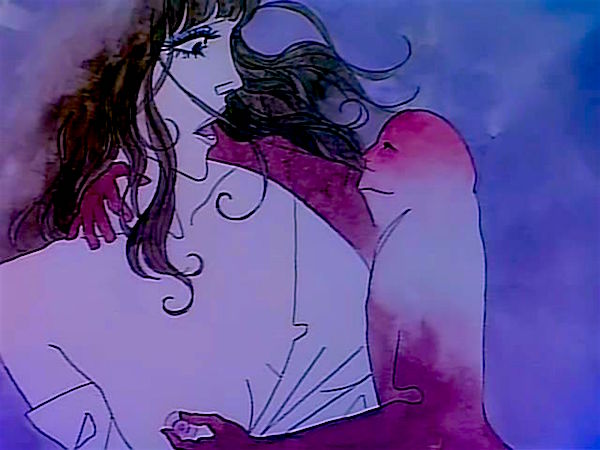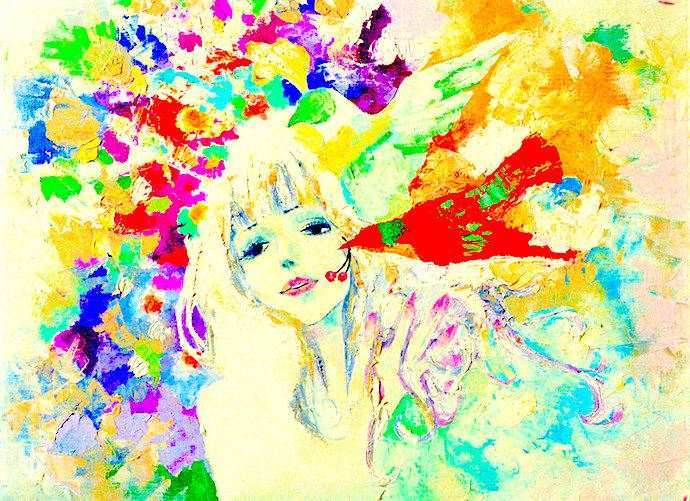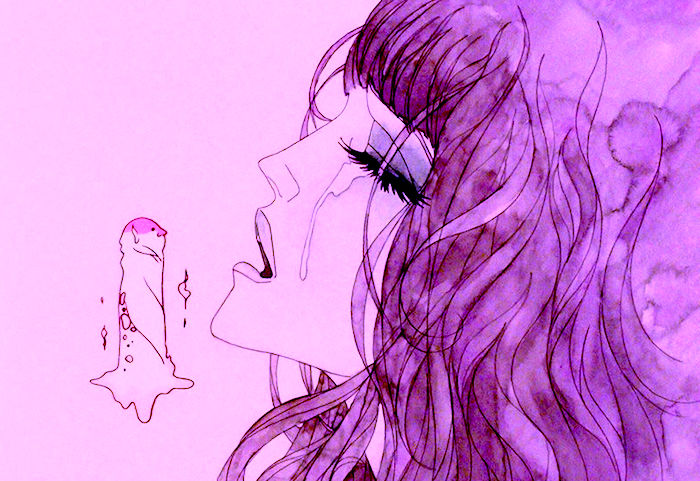When 19th Century writer, Jules Michelet, wrote La Sorcière (Satanism and Witchcraft) his goal was not limited to providing a history of Medieval European Witchcraft. In truth he was seeking to do something far more interesting — his intention was to reveal that history as a cultural rebellion against the oppressions of the Roman Catholic Church and Feudalism. Michelet was sympathetic to the plight of peasant women of this era. What culture and history named as Satanic or Witchcraft, he attempted to redefine from the other side of a largely unrecognized side of this phenomenon: Paganism.

An impoverished woman doesn’t quite fit into her community is to be judged as an Evil Witch.
Illustration by Martin van Maele
from Jules Michelet La Sorcière, 1911 Edition.
The idea, as presented by Michelet, was to look underneath such dark practices as Devil Worship and discover its true origins. In fact, he viewed this with an eye to where non-prescriptive spiritual beliefs might lead to something of beauty and goodness. Was the cultural magnifying glass obstructing the goodness to propagate the fear of the people? His sympathies were given to the oppressed and victimized. Paganism was not necessarily Evil from Michelet’s viewpoint. His book would assist in laying out a model for modern Pagan Wiccan Ideologies.

Were these men afraid of Witchcraft or simply afraid of a women refusing patriarchal control?
“The Witch, No. 3”
Joseph E. Baker, c. 1890
Michelet reconstructs and reimagines a situation in which a coven of desperate women push their unique forms of social protest into darkness by the use of decadent rituals performed under the power of the moon. Black Sabbaths performed by witches. It was not the strength found in nature that was the problem. The problem was when these spiritual and empowering rituals sought to do harm. He then devotes the remainder of the book to reconstructions / imaginings taken from the horrific European witch trials. Michelet’s writings were debunked as inaccurate and problematic long ago, but he is responsible for turning a sympathetic light toward oppressed women and scorn on irrational societal fears. If nothing else, La Sorcière speaks to a very different kind of revolutionary danger that goes far beyond the simple political. If a society chooses to push large groups into oppression and misery, there is simply no telling what those groups might form to rebel.

Entering the 1970’s society felt that parents had control of their children. Cue a masterful film about a pretty little girl possessed by The Devil.
Linda Blair
The Exorcist
William Friedkin, 1973
Cinematography | Owen Roizman
As the world crashed out of the 1960’s and slammed into the resulting gains and damages of the 1970’s, Japan’s Mushi Production was looking to take on a bigger slice of the Animated Movie Pie. They instructed their animation team to create three adult-oriented projects referred to as The Animerama Trilogy. Mushi Productions and legendary animator, Osamu Tezuka, were looking to keep up with an ever evolving and reactionary era. The Animerama Trilogy would be Anime / Manga with a difference. These three films were to be full-on erotica and they would also adhere to psychedelic animation.

“All those lonely people…” Taking animation into the psychedlic.
Yellow Submarine
George Dunning, 1968
Art Direction | Heinz Edelmann
Perhaps it was worries about trying to push ahead of the coolness / originality created within the animated Beatles movie, Yellow Submarine, combined with rumors of hardcore content about to explode within mainstream cinematic entertainment. This was the era of Last Tango in Paris, The Devils, A Clockwork Orange and The Exorcist. It was at this time that two truly pornographic films enjoyed mainstream success. Deep Throat and Beyond The Green Door were not limited to creepy porn cinemas. Whatever propelled Mushi Productions to push the cinematic envelope, this was The Sexual Revolution and Liberation moving in full-tilt-boogie mode. Mushi Productions was ready to make X-Rated pornographic animated films. The sexuality was to be both erotic and graphic, but equal attention needed to be applied in the areas of plot and artistic quality.
Belladonna of Sadness was actually the second of the trilogy. Tezuka assigned Eiichi Yamamoto to serve as Belladonna‘s director and visionary leader. He quickly convinced painter, Kuni Fukai, to helm the film’s art direction duties. Artistic freedom and quality were of upmost importance. Astro Boy was the money maker for Mushi Productions. This trilogy was to be creative. Concerns regarding commercial success were to be pushed off the table.

The oppressed victim transforms into a magically powerful Witch…
Belladonna of Sadness
Eiichi Yamamoto, 1973
Cinematography | Shigeru Yamasaki
Yamamoto understood the importance of story and the importance of artistic quality. Fukai was not particularly interested in Anime or Manga, but he did want the freedom to pursue his artistic vision. He was also drawn to the idea that Tezuka was not particularly interested in movement. His goal was to focus on the detail of illustration. In other words, traditional ideas of animation were out the window. Fukai found the film’s development and production to be an enjoyable artistic experience. Based upon interviews, it is clear that Fukai captured the director’s ideas onto scrolling murals. The film’s cinematographer, Shigeru Yamasaki, then set the framing as his camera moved along the murals and other illustrations. Belladonna of Sadness took two years to create using less than ten additional animators. Masahiko Satoh was hired to provide the musical score. It is a jazzed-fused mash-up of experimental synthesizers with syrupy pop ballads. The musical score works incredibly well. Like the film itself, Satoh’s score has a large number of fans as well.

Defying conventional ideas of Anime and animation…
Belladonna of Sadness
Eiichi Yamamoto, 1973
Cinematography | Shigeru Yamasaki
By the time Belladonna of Sadness was ready for release, Mushi Productions was about to fall into bankruptcy. Their Japanese distributor, Nippon Herald Eiga, was at a loss when it came to marketing the movie. Even though the strange film was well received at the 1973 Berlin International Film Festival, it received a limited release in Japan without any success. Having now seen this infamous movie, it seems all the more odd that it came and went with little to no interest. It was never officially released outside of Japan. In the late 1970’s it was discovered that Belladonna had gained a minor female following.
An attempt to re-cut the movie so that it might hold a more immediate appeal to female viewers only resulted in muting the film’s power. Much of the hardcore sexuality and sexual violence was trimmed away. It is easy to understand why the director decided to remove some of these elements as they have and continue to cause problematic issues, but those original choices still make sense to the overall reach of the film. However Yamamoto had the idea of incorporating a scan of Liberty Leading the People by Eugene Delacroix to serve as a potent closing image.

A poisonous flower or a source of magical healing?
Belladonna of Sadness
Eiichi Yamamoto, 1973
Cinematography | Shigeru Yamasaki
The additional mix of Delacroix’s style makes sense given that the movie pulsates via a number of various stylistic influences. But the most logical piece of this idea is that the painting better conveys the film’s closing lines. Belladonna of Sadness has always enjoyed a strong reputation among fans of the Anime / Manga genres. Various and inferior versions of the movie floated around for years. The folks at Cinelicious Pics worked hard to secure the rights to restore and distribute an uncensored version of the movie to the world. All of the eroticism, depravity and sexual brutality has been returned. But the 1979 inclusion of Delacroix’s painting remains. Belladonna of Sadness is now available in 4K remaster.
How to describe this film without giving too much away? I’m not confident I can do that so I will keep my summary simplistic and utilize shots from the film to indicate the beauty, complexity and ultra-weird world it portrays. The over-all look of the film is tied to an idea of glam beauty that you might expect to see in illustrated adverts of the early to mid-1970’s. The film’s protagonist, Jeanne, is rendered as a slender and sublimely perfect nymphette. Her appearance is the one consistent element of the movie’s imagery. Jeanne‘s beauty does not match the world in which she has been born. She is simply too elegantly beautiful to belong here.

The identity finds no solace or safety in marriage…
Belladonna of Sadness
Eiichi Yamamoto, 1973
Cinematography | Shigeru Yamasaki
She is a peasant girl who has just married a humble but handsome man. Only minutes into her marriage, Jeanne is raped by the land’s Feudal Lord — and his entire court including Church leadership. This might sound silly, but that animated / painted sequences of rape and sexual torture are truly horrific. Kuni Fukai and his team found ways to render this human cruelty that go well beyond the boundaries of living actors. The sequence is traumatic and may prove to be more than some are willing to watch. When the film was screened in San Francisco more than a few people opted to leave the cinema. If you thought the killing of Bambi‘s mom was harsh, that classically upsetting animated moment is rendered sweet in comparison.

Believe it or not, this film’s animated depiction of rape is disorienting, visceral and horrifically disturbing.
Belladonna of Sadness
Eiichi Yamamoto, 1973
Cinematography | Shigeru Yamasaki
The ability of this film to capture both the act of rape and the consequence of the attack is nothing short of brilliant. As horrible as these sequences are — they are essential. The rape of Jeanne is not presented as erotic, but it does force forward an uncomfortable issue. While Yamamoto is clearly not looking to excite the audience, that doesn’t mean that this depiction of rape is above reproach. An argument could be made that his film goes too far. Somewhere in the synapse of the depicted horror there registers a worrying sense of the sadistic.
Is the explicit manner in which these brutalities are depicted meaningful or exploitive? While I think a case could be made, ultimately I was moved by the way the film managed to present the sheer trauma and damage of rape. Even still it must be noted that these sequences are so repulsive and shocking — they push it all so far that the viewer’s mind and body are both required to react.
It is a manipulation. It is a tough watch. Maybe too tough to be considered as an “entertaining” experience — and, no matter, this movie’s intentions are to entertain.
Draw your own conclusion.
Belladonna of Sadness is obviously surrealistic, but it is persistently grounded in realistic logic. Jeanne‘s life and marriage are ruined. As she attempts the impossibility of healing and restoring her identity she falls into a spiraling depression. Pushed past the edge of sanity, Jeanne appears to retreat into an attempt at calming through sexual self release. Or at least this is how I interpret it. Instead of finding peace, she discovers The Devil. Playful and ever-ready to flirt, The Devil never attempts to hide his identity. He repeatedly points out that Jeanne has summoned him.
Evil has not come to Jeanne without invitation.
Jeanne makes a pact and gives her body and soul for as she phrases it, “something bad.” The something bad is actually empowerment and full claim of her sexual liberation.
Our protagonist is angry when she awakens from her surrealistic fuck-fest with Satan. She has anticipated that she would wake in Hell. She thought her hair would have turned into snakes. She expected to be a scary old hag. Instead she wakes refreshed, clean, energetic, healed and surrounded by flowers that seem to radiate energy.

“You had already died, anyway.”
Belladonna of Sadness
Eiichi Yamamoto, 1973
Cinematography | Shigeru Yamasaki
“I want people to turn away in horror when I pass by in the street. I don’t want to forget anger and hatred!” Jeanne seethes to The Devil.
“You have become beautiful, Jeanne. Like a young girl in love. Radiant. You are even more beautiful than God,” The Devil replies.
The One who owns her soul explains that a woman can be angry, scary and raging with hatred and remain beautiful. Why? Because she does not fully understand the power of her own self and beauty. The Devil teaches her that she can channel her beauty, charm, intellect and intelligence to do good or utilize those same powers to cause righteous evil. Nature will bend to Jeanne‘s will. Why? Because she is woman.
Yamamoto’s vision of The Devil is a penis of various sizes and compulsions. Evil is represented by the penis. It is comical, but it is also oddly effective in depicting Jeanne’s initiation into the sensual. The vagina is used to symbolize a wide range of ideas and aspects of life, but the key to Belladonna of Sadness‘ use of yonic symbology are related to joy, pleasure and life.

“Are you The Devil?”
“Yes,” replies the cock along with an opportunity for empowerment…
Belladonna of Sadness
Eiichi Yamamoto, 1973
Cinematography | Shigeru Yamasaki
Welcome to Eiichi Yamamoto’s take on Feminist Theory. As Jeanne allows herself to shed inhibitions — she evolves into a powerful sexual predator. She seduces and gains strength as the men begin to lose theirs. Jeanne has long left her former life, she is now surrounded by beauty. She finds creative and magical ways to return to her fellow peasants.
Jeanne magically creates food and wine. She brings sexual education to her fellow peasants. She turns the poisonous Belladonna flower into medicine that stops pain — most importantly notes is that her magic flower takes away the pain of childbirth for the women of her village. And she pulls the peasants back to her Sexual LSD’d-like trip’d out home for orgy sabbaths. All of which are depicted in stunning ways and in a multiple manner of styles. Some of the film’s stylings are truly beautiful, others are crude, some are silly, some profane and all are aiming to shock.
Eventually Jeanne must decide how she really wants to use her new found power.
Ultimately there is a reason Yamamoto named the protagonist “Jeanne.”
Jeanne d’Arc, anyone? Did I mention the story takes place in France?
Regarding the film’s X-Rated ideologies — Belladonna of Sadness aims to sexually excite. This is eroticism. To be more specific, this is experimental eroticism.
Why is it experimental? For more reasons than I care to list, but this is an animated film. Depictions of the human body morph from realistic renderings to the profanely abstract. This is even more true when applied to genitalia.
Is Belladonna of Sadness actually erotic? I guess that depends on what winds your clock. Personally, I do not find illustrations all that sexy. But that is just me.
I should also point out that I’ve no interest in animated film, Anime or Manga. The fact that I wanted to write about Belladonna of Sadness indicates a great deal regarding how I feel about it. I loved the experience of this movie.
I admire the artistic audacity, experimentation and the epic go-for-broke approach. And I take great pleasure in seeing something totally new and unique. I have never seen a movie like this one. It is unique. It is also a problematic film and it doesn’t always work. But when Belladonna of Sadness does work — it compulsively pulls us into its own astounding world.

Erotica Abstracta / Fascinating to watch
Belladonna of Sadness
Eiichi Yamamoto, 1973
Cinematography | Shigeru Yamazaki
Belladonna of Sadness has been gyrating for over 43 years. It isn’t going anywhere. For more info: http://www.cineliciouspics.com/belladonna-of-sadness/
Matty Stanfield, 8.25.2016









